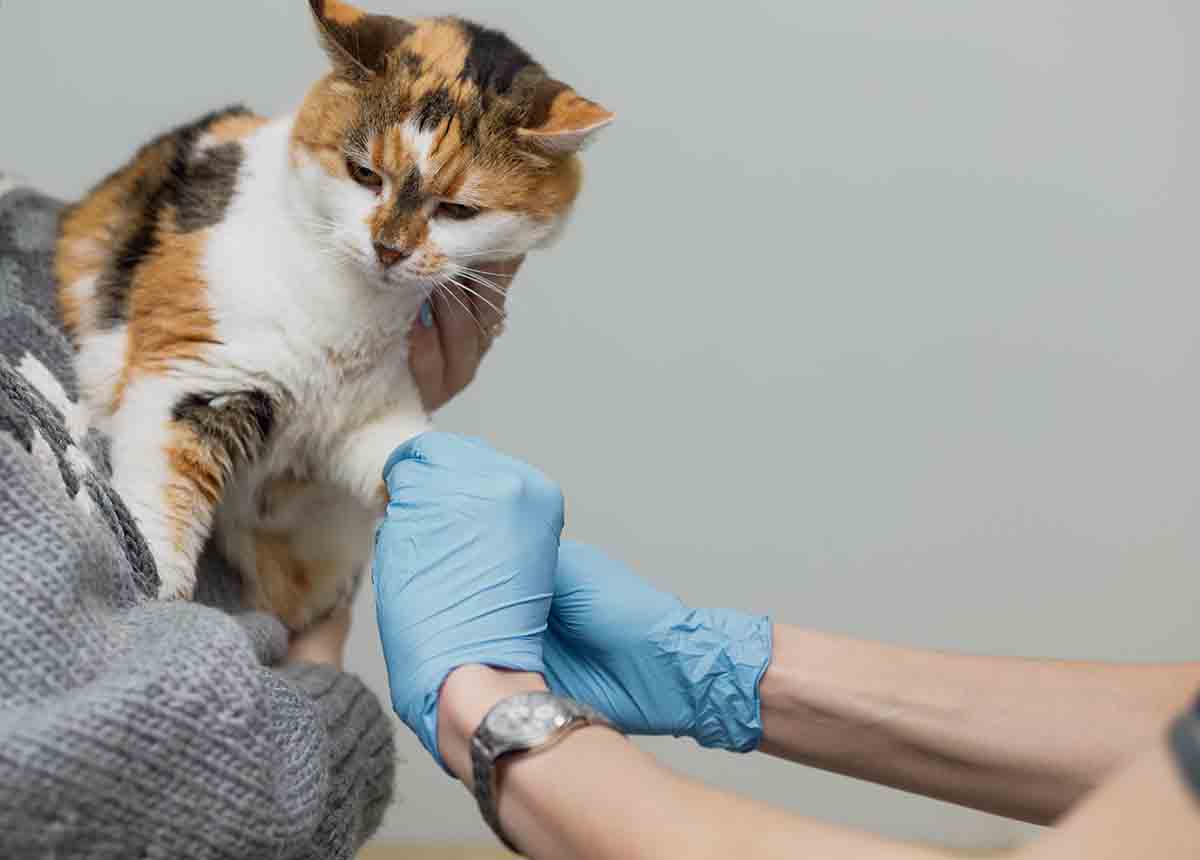Just like with people, accidents and emergencies involving our pets can happen at any time. That’s why it’s always a good idea to be prepared, and having a pet first-aid kit is one of the best ways to do that.
There are many reasons why you should have a pet first-aid kit. Perhaps the most important one is that it can help you to deal with emergencies until you can get your pet to the veterinarian. If you don’t have a pet first-aid kit yet, now is the time to put one together. Use this blog as a checklist to help put together a pet first-aid kit.
What Should Be Included In A Pet First-Aid Kit?
A good first-aid kit should have a variety of supplies, so you are most prepared for any situation. Below is a great list of items to help you get a good start!
Emergency Pet First-Aid Manual
An emergency pet first-aid manual is a guide that helps provide instructions for handling common emergencies, like what to do if your pet is choking, bleeding, or poisoned.
Gauze
Medical gauze is a sterile cotton fabric that is used to clean and protect wounds. It can also be used to staunch bleeding, protect wounds from being irritated, and help keep the wound from becoming infected.
Bandages
Bandages are used to cover and protect a wound. It is usually secured in place with adhesive tape or velcro. Bandages can help keep a wound clean and protected from infection and can help reduce swelling.
Adhesive Tape
Adhesive tape is a strong and flexible material that is helpful in a variety of first-aid scenarios. Most commonly, adhesive tape can be used to secure a bandage in place or to hold a splint in place.
Hydrogen Peroxide
Hydrogen peroxide is a chemical compound that is used as a disinfectant. In a pet first-aid kit, hydrogen peroxide can be used to clean wounds and prevent infection.
Antibiotic Ointment
An antibiotic ointment is a topical cream or ointment that is applied to the wound to treat an infection. It may be used to treat minor cuts and scrapes.
Scissors
Trauma shears are a specialized pair of scissors used for cutting through clothing, bandages, and other materials like thick fur in an emergency. In a pet first-aid kit, trauma shears are useful to cut away clothing, collars, bandages, and long fur from an injured pet to help free them if they are trapped and to provide access to the injury so it can be treated.
Gloves
A good pair of latex gloves will protect you, the wearer, from exposure to blood and other bodily fluids. Sterile gloves will also help protect your pet’s wound or injury from becoming infected.
Saline
Saline is a sterile solution of salt and water that is used to clean wounds and irrigate them. It can also be used to flush out foreign objects from a pet’s eyes or ears.
Additional Contents To Include In A Pet First-Aid Kit.
The above list of supplies is a good starting point when building a first-aid kit for your cat or dog, but it is by no means exhaustive. If you already have a first-aid kit for pets and would like to add to it, here are some additional items that can come in handy when you are caught in a pinch.
- Cotton Balls- For ointment applications.
- Milk of Magnesia- To absorb and counteract poisons.
- Thermometer- To take accurate readings of your pet’s temperature.
- Tweezers- Removing splinters or ticks.
- Magnifying Glass- To get a better look at cuts, wounds, splinters, and more.
- Plastic Syringe- To flush wounds or give oral medications.
- Headlight- Hands-free way to provide light.
- Burn gel- To treat burns.
- Instant ice pack- To cool your pet down.
- Foil Blanket- To keep your pet warm.
Time To Create Your First-Aid Kit
You never know when an unfortunate event may strike. As a pet owner, it is your responsibility to be prepared in the case of a medical emergency. In a worst-case scenario, properly stocked pet first-aid kits help you stabilize your pet until you can get them to a veterinarian. But even if you never have to use it in a life-saving situation, you will find yourself thankful to have it for everyday treatment like removing ticks and burs from your pet’s fur.
Once you put together your pet’s first-aid kit, remember to keep it with you. The best pet first-aid kit is one that is readily available in a time of need! If you would like to learn more about dog first-aid. Cat first-aid, or how to best put together your kit, contact the animal experts here at Continental Animal Wellness Center today!
Looking for more great resources on keeping your pets safe while going on adventures? Check out our guide on how to keep your dog cool during summer hikes. Did you know that dogs can quickly overheat on hot days? We break down the signs of overheating and what can do to prevent this danger!
Save These Important Emergency Contacts
Having a first-aid kit is a great way to be prepared for an unforeseen emergency with your pet. It is also important to have a plan for where to go in the event of an emergency. Head over to our pet emergencies page to find the locations, hours, and contact information for Flagstaff Animal Emergency Centers.


